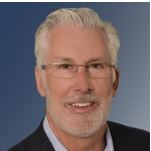
The federal Qualified Opportunity Zone (QOZ) program is by the far the most valuable and impactful tax program enacted in this century. The program was developed under the Obama Administration but finalized under the Trump Administration and had wide bi-partisan support since it is designed to infuse hundreds of billions of dollars into economically challenged communities. The program will yield significant tax benefits for both investors and communities across the country for the next three decades.
December 31st is a very critical date for investors and QOZ fund managers:
- Qualified Opportunity Funds (QOF) must be established and funded by December 31, 2019 in order for those investors to get the maximum benefits under this long-term investment program. This deadline exists since the OZ rules require an investor to hold their fund investment for at least seven years to obtain the maximum 15% reduction in the deferred tax gain that must be reported on December 31, 2026. Investments made after December 31st will not allow the full seven-year holding period – resulting in an additional 5% gain in 2026.
Due to the upcoming deadline, it is generally advisable for taxpayers with 2019 capital gains in the last 180 days, or if gains are IRC Section 1231 (trade or business assets) or will be reported on a K-1 from a partnership or S Corp (which are deemed to occur on December 31st), to form a QOF and fund it with the largest gain they anticipate. Excess funding can be pulled out in calendar 2020, generally with no additional tax.
- For those QOZ fund managers who had set up their QOF’s earlier this year (or in 2018), December 31st is generally a very critical semi-annual “Testing Date” under the QOZ regulations. To avoid penalties, the fund managers must generally drop down cash and assets held by the QOF into a subsidiary entity known as a Qualified Opportunity Zone Business (QOZB) within the first tax year of the QOF – otherwise annualized penalties of up to 5% can be imposed.
The QOZ program requires each QOF to maintain at least 90% of its assets in Qualified Opportunity Zone Business Property (QOZBP). Generally this requires the QOF to hold either real estate or active business property that is located in one of the 8,700 OZ census tracts. Cash held by a QOF is generally not treated as an eligible QOZBP. QOF’s are allowed to have QOZB’s as subsidiary entities that must be either a corporation or a partnership. The formation of the QOZB presents two very valuable benefits for the fund manager and investors:
- The required QOZBP percentage falls from 90% to 70% at the subsidiary level, and
- The QOF can now avail itself to the very liberal Working Capital Safe Harbor rule under the proposed regulations, which allows at least a 31-month period in which to deploy cash into a real estate and/or operating business venture (the taxpayer must have a written business plan and cash-flow projections to qualify under this safe harbor).
By taking this action the QOF extends its period for reinvestment by at least 31 months and eliminates the exposure to the 5% penalty for missing the 90% QOZBP test.
The federal QOZ program was introduced effective January 1, 2018, as part of the 2017 Tax Cuts and Jobs Act (2017 Act). The QOZ program is a highly flexible tax deferral and permanent savings program available to individuals and business entities that are holding appreciated assets. It offers taxpayers a unique opportunity to divest out of concentrated appreciated asset positions and allow taxpayers to tax efficiently move the associated Deferred Tax Gain into one or more asset classes. Virtually any short or long-term capital gain can be reinvested into a Qualified Opportunity Fund (QOF) within 180 days of the tax gain being reportable by the seller.
It should be noted that all but four states adopted the QOZ program. California, Mississippi, North Carolina and Massachusetts have not adopted the program, so deferral and permanent savings are not available in those states.
The benefits, include a deferral of the original gain until December 31, 2026, and only 85% of the gain is reportable in 2026 if the QOF interest has been held at least seven years on December 31, 2026. This is the reason the QOF must be formed and funded by December 31st, 2019 – otherwise the gain in 2026 will be 90% if held five years or more, or 100% if held less than five years.
The most significant element of the QOZ program is that after an investor has held their QOF interest for at least 10 years, they can sell their QOF interest, or the underlying fund assets and no tax gain is reportable on the gain that accrued from the date of investing into the QOF.
For example, assume a taxpayer had a 2019 $1,000,000 capital gain from the sale of their personal business, real estate, a collector car or crypto-currency. They invest the full gain into their personal QOF by December 31, 2019 which was also within 180 days of the tax gain being reportable (which is not always on the date of sale). Assuming they hold the QOF for at least 10 years, they will report 85% of the tax gain – or $850,000 – and pay tax at the capital gain rate in effect for 2026 (the current federal long-term capital gain rate is 20% + 3.8% Obamacare Net Investment Income rate). When the QOF interest, or its assets, or sold on or after December 31, 2029 for $2,500,000, the $1,500,000 gain (excess above the $100,000 original investment) is never taxed for federal purposes.
Blake Christian, CPA/ MBT is a Tax Partner in HCVT LLP’s Long Beach, Calif., and Park City, Utah offices. He has assisted over 25 clients in establishing QOFs and is a frequent speaker and author on the subject of Opportunity Zone fund formation and investing.




















Recent Comments